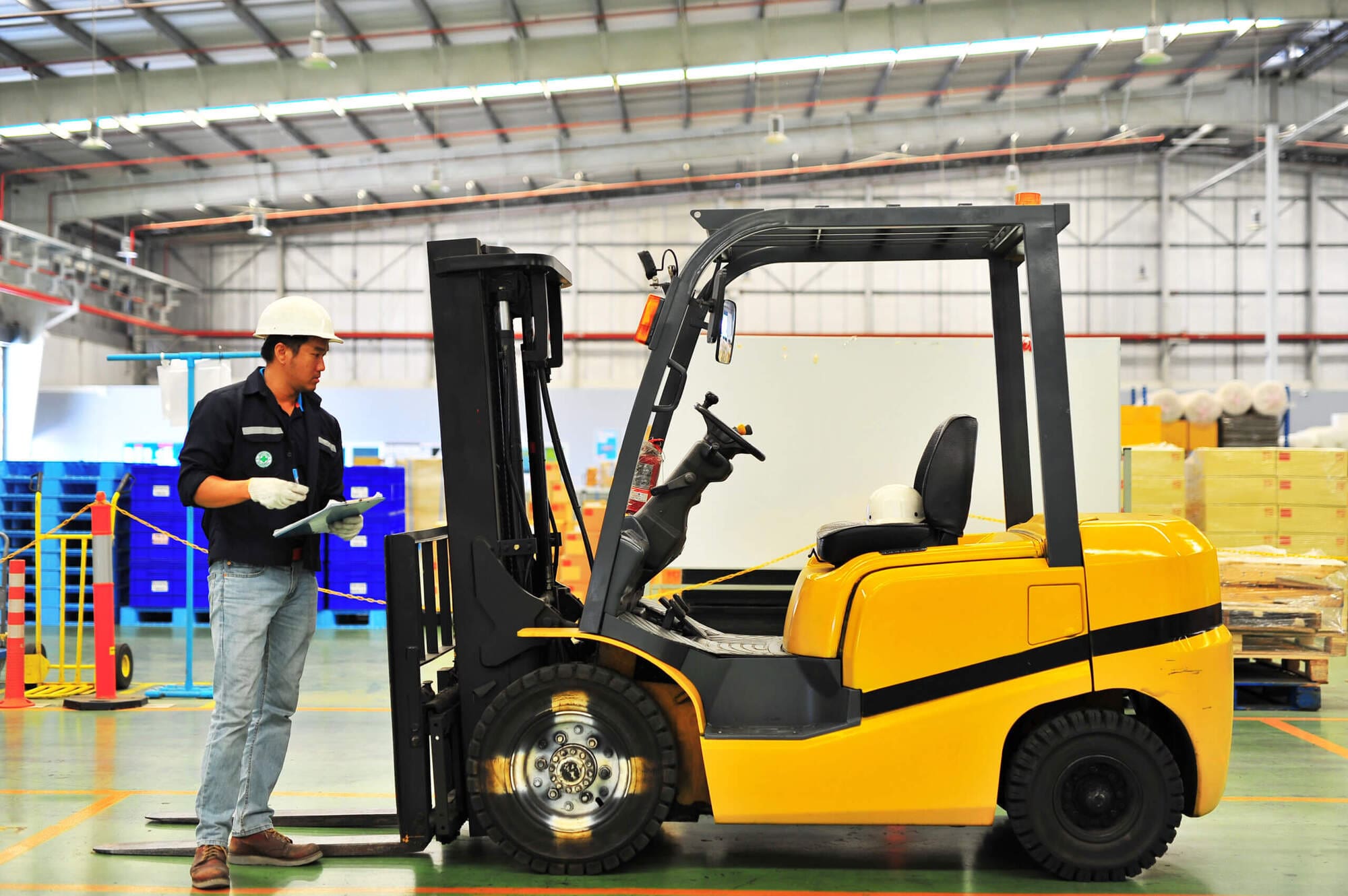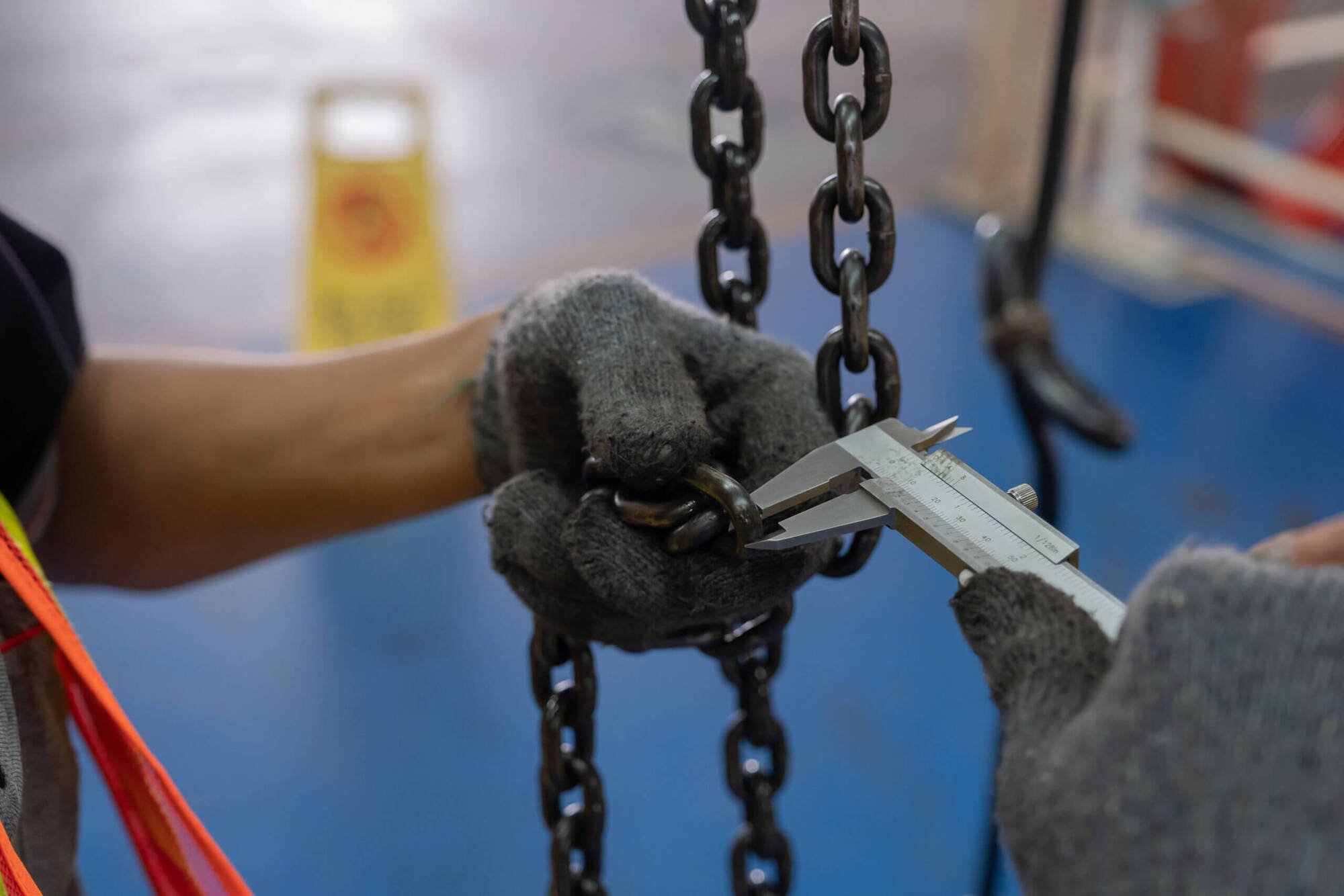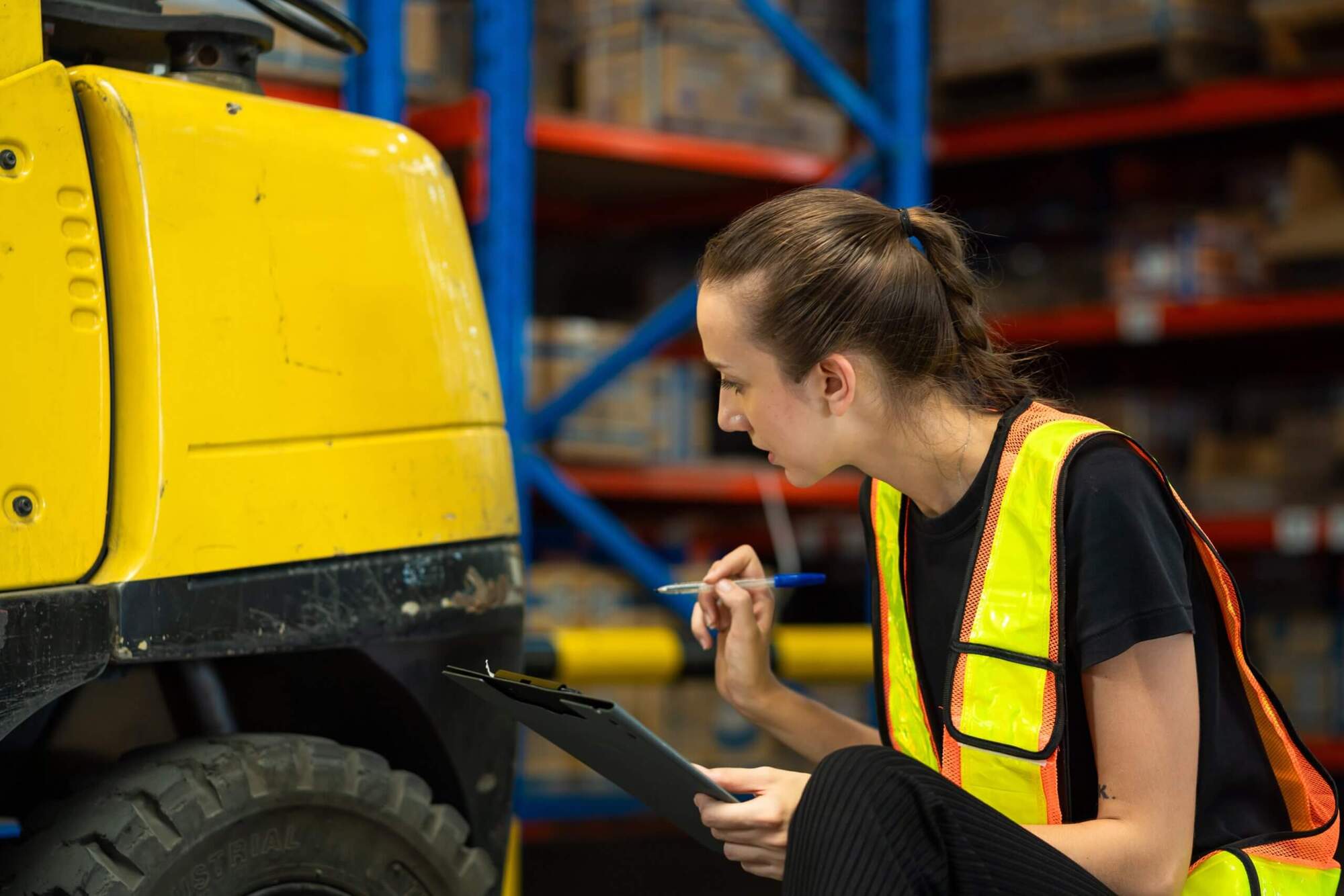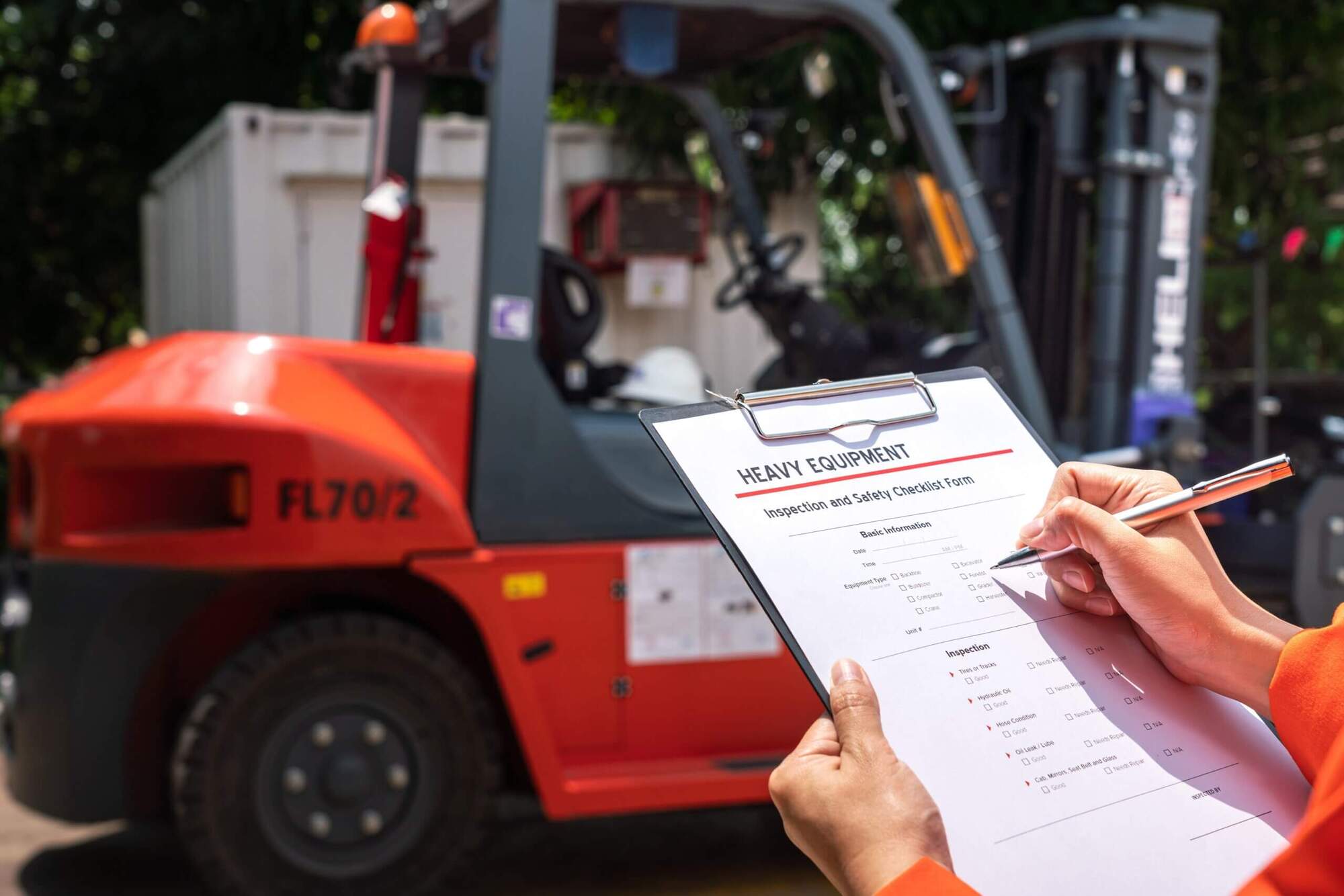In this article
Lifting equipment is essential in many industries, from construction and warehousing to healthcare and manufacturing. But with great power comes great responsibility. If lifting equipment is not properly maintained and inspected, it can become a serious safety hazard. That’s where LOLER inspections come in.
A LOLER inspection is not just a box-ticking exercise; it’s a legal requirement designed to keep workers safer and businesses compliant. Regular inspections help prevent equipment failures, reduce the risk of accidents and ensure that lifting operations run smoothly.
Here, we’ll break down everything you need to know about LOLER inspections – what they are, why they matter and how to carry them out effectively. We’ll also cover key checklist items, the training required, how often inspections should take place and best practices for keeping records.
What is a LOLER Inspection?
A LOLER inspection, also known as a thorough examination, is a legally required assessment of lifting equipment to ensure it is safe for use. Under the Lifting Operations and Lifting Equipment Regulations 1998 (LOLER), businesses and organisations that use lifting equipment must have it inspected at regular intervals by a competent person.
The purpose of a LOLER inspection is to check that lifting equipment is in good working order, properly installed and safe to operate. This includes verifying that the equipment has no defects that could lead to failure, ensuring it is being used correctly and confirming that any necessary maintenance or repairs have been carried out.
Lifting equipment covered by LOLER includes cranes, hoists, vehicle tail lifts, lifting accessories (such as chains and slings) and patient lifts in healthcare settings. If a business uses equipment designed for lifting or lowering loads, it is likely subject to LOLER regulations.

Why Are LOLER Inspections Important?
LOLER inspections are needed to ensure the safety of workers and anyone else who may be affected by lifting operations. Without regular inspections, faulty or poorly maintained equipment could lead to serious accidents, including injuries or even fatalities.
Key reasons why LOLER inspections matter:
Preventing Accidents
Regular inspections help identify wear and tear, mechanical faults or improper usage before they lead to equipment failure.
Legal Compliance
Businesses have a legal responsibility to ensure that any lifting equipment is safe. Failing to comply with LOLER can result in fines, legal action or even the closure of a business.
Protecting Employees
Safe lifting operations reduce the risk of workplace injuries, helping to maintain a secure and productive working environment.
Minimising Downtime
Spotting potential issues early can prevent costly breakdowns and unexpected delays in operations.
Meeting Insurance Requirements
Many insurers require businesses to keep up with LOLER inspections as part of their policy conditions.
By conducting thorough and timely LOLER inspections, businesses can ensure their lifting equipment remains in top condition, reducing risks and maintaining compliance with UK health and safety standards and laws.
LOLER Inspection Checklist
A LOLER inspection follows a structured process to assess the safety and functionality of lifting equipment. The inspection must be carried out by a competent person – someone with the appropriate training, knowledge and experience to identify potential defects and assess whether the equipment is safe to use.
Below is a checklist of key areas that should be covered during a LOLER inspection:
General Condition and Suitability
- Is the equipment suitable for its intended use?
- Has it been installed and positioned correctly?
- Are there any visible signs of damage, wear or corrosion?
Structural Integrity
- Are there any cracks, distortions or weaknesses in the equipment’s frame or load-bearing parts?
- Are all bolts, welds and fastenings secure and in good condition?
- Has the equipment been modified in any way that could affect its safety?
Mechanical Components
- Do moving parts (such as gears, pulleys and chains) operate smoothly without excessive wear?
- Are there any signs of leaks in hydraulic or pneumatic systems?
- Are any guards or safety features in place functioning correctly?
Lifting Accessories
- Are chains, slings and ropes free from fraying, stretching or any other damage?
- Are hooks, shackles and fastenings in good working order?
- Are lifting points and attachment mechanisms secure and undamaged?
Load Testing and Operation
- Does the equipment lift and lower loads smoothly and safely?
- Are load limits clearly marked and being adhered to?
- Is the emergency stop function working correctly?
Controls and Safety Mechanisms
- Are control systems, brake and limit switches fully functional?
- Are emergency stop buttons, alarms and warning signals operational?
- Are safety interlocks and fail-safes working as intended?
Environmental Factors
- Is the equipment being used in a safe and stable location?
- Are external factors (such as extreme weather, uneven surfaces or overhead obstacles) accounted for?
- Is the working environment free from hazards that could interfere with safe operation?
Documentation and Record-Keeping
- Are previous inspection records and maintenance logs available and up to date?
- Has the equipment been checked at the required intervals?
- Have any defects or concerns been properly reported and addressed?
By following this checklist, businesses can ensure their lifting equipment is thoroughly assessed and meets all LOLER requirements. If any faults are identified, immediate action should be taken to repair, replace or remove the equipment from service until it is deemed safe to use.

What Training Do You Need to Carry Out a LOLER Inspection?
A LOLER inspection must be conducted by a competent person. This means someone who has the necessary skills, knowledge and experience to assess lifting equipment thoroughly and identify potential hazards. But what training is required to meet this standard?
Industry Experience and Technical Knowledge
A competent person should have a solid understanding of lifting equipment, how it operates, and the risks involved. This typically comes from:
- Hands-on experience in a relevant industry (e.g., construction, manufacturing, logistics).
- Familiarity with different types of lifting equipment and accessories.
- An understanding of mechanical principles and how equipment wear and tear affects safety.
LOLER and PUWER Regulations Training
Since LOLER inspections must comply with legal standards, training on relevant UK legislation is essential. Courses covering the Lifting Operations and Lifting Equipment Regulations 1998 (LOLER) and the Provision and Use of Work Equipment Regulations 1998 (PUWER) help inspectors understand:
- The legal requirements for lifting equipment inspections.
- Employer and employee responsibilities under LOLER.
- How to assess compliance and record inspection findings correctly.
LOLER Thorough Examination Courses
Many training providers offer Thorough Examination courses designed for LOLER inspections. These courses typically include:
- Identifying faults and defects in lifting equipment.
- Inspection techniques and reporting procedures.
- Load testing and risk assessment methods.
- How to determine if equipment is safe to use or requires repairs.
Qualifications and Certification
While there is no single, mandatory qualification for LOLER inspectors, some recognised certifications demonstrate competence, including:
- CITB Site Safety Plus courses (for those working in construction)
- Lifting Equipment Engineers Association (LEEA) qualifications, such as:
- LEEA Diploma in Lifting Equipment Testing and Examination.
- LEEA Approved LOLER Inspection Training.
- City & Guilds certifications in lifting operations and thorough examination.
Manufacturer-Specific Training
In some cases, manufacturers of lifting equipment provide training on their specific models. This can be useful for those responsible for inspecting specialist equipment, ensuring they understand its unique safety features and maintenance requirements.
Ongoing Professional Development
Lifting equipment and safety standards evolve over time, so LOLER inspectors should engage in continuous learning, including:
- Refresher courses to stay up to date with regulatory changes.
- Practical workshops to improve inspection techniques.
- Memberships with professional bodies like LEEA to access industry updates and guidance.
By completing the necessary training and gaining hands-on experience, inspectors can confidently assess lifting equipment, helping businesses stay compliant and keep their workers safe.
Preparing for a LOLER Inspection
Proper preparation for a LOLER inspection is important so that it runs smoothly. Whether you are responsible for organising the inspection or conducting it yourself, following these steps will help streamline the process and ensure compliance.
Identify Equipment That Requires Inspection
Before the inspection, create a list of all lifting equipment and accessories that fall under LOLER. This may include:
- Cranes, hoists and mobile lifting equipment.
- Forklift trucks and vehicle tail lifts.
- Passenger and goods lifts.
- Lifting accessories such as slings, chains, shackles and hooks.
Check previous inspection records to ensure no equipment is overlooked.
Gather Documentation and Maintenance Records
To support the inspection, make sure all relevant documents are readily available, including:
- The last LOLER inspection report.
- Maintenance logs and servicing records.
- Manufacturer’s guidelines and safe working load (SWL) information.
- Risk assessments and any records of previous defects or repairs.
Providing this information helps the inspector assess whether the equipment has been maintained correctly and is fit for use.
Ensure Equipment is Clean and Accessible
Lifting equipment should be clean and free from debris, grease or rust to allow for a thorough examination. Additionally, ensure that:
- The equipment is positioned in a way that allows safe and easy access.
- Any guards, panels or covers that need to be removed for inspection can be accessed safely.
- Equipment is not in use during the inspection unless load testing is required.
Notify Relevant Staff
Inform employees, operators and managers about the upcoming inspection. This ensures that:
- Operators are available to answer any questions about how the equipment is used.
- There are no disruptions or work schedules due to unavailable equipment.
- Health and safety officers or maintenance teams can provide any necessary documentation or assistance.
Check for Obvious Defects
Although a LOLER inspection is designed to identify faults, it is good practice to conduct basic checks before the inspection. Look for:
- Visible wear and tear, such as frayed cables, worn-out chains or cracked lifting accessories.
- Leaks in hydraulic systems.
- Unusual noises, jerky movements or operational issues.
Addressing minor issues before the inspection can help avoid unnecessary failures and potential downtime.
Confirm the Inspector’s Competence
LOLER inspections must be carried out by a competent person with the necessary skills, knowledge and training. If using an external inspector, ensure they:
- Have relevant qualifications (e.g., LEEA certification).
- Are familiar with the specific type of equipment being examined.
- Provide a detailed report and certification after the inspection.
Plan for Any Necessary Repairs or Actions
If defects are found during the inspection, they must be addressed before the equipment is used again. Have a plan in place for:
- Immediate repairs if any issues are identified.
- Taking unsafe equipment out of service.
- Updating maintenance schedules and records accordingly.
By preparing thoroughly for a LOLER inspection, businesses can ensure compliance, improve safety and reduce the risk of unexpected failures.

How Often Should a LOLER Inspection Happen?
The frequency of LOLER inspections depends on the type of lifting equipment and how it is used. The law requires that all lifting equipment be subject to thorough examination at regular intervals to ensure it remains safe for use.
Standard LOLER Inspection Intervals
LOLER specifies the following minimum inspection frequencies:
- Every six months – for lifting accessories and equipment used for lifting people (e.g., passenger lifts, patient hoists).
- Every 12 months – for all other lifting equipment (e.g., cranes, forklift trucks, vehicle tail lifts).
- After installation or significant repairs – any lifting equipment that has been newly installed, repaired, modified or relocated must be inspected before use.
More Frequent Inspections in High-Risk Environments
Some workplaces may require more frequent inspections due to higher risks or heavier use. Factors that might necessitate additional checks include:
- Frequent or heavy usage – Equipment used daily or for lifting heavy loads may wear out faster.
- Harsh environments – Exposure to extreme temperatures, corrosive substances or outdoor conditions can increase wear and tear.
- Known history of defects – Equipment that has previously failed inspections or requires repairs should be monitored more closely.
A competent person can advise on whether more frequent inspections are necessary based on the specific risks associated with the equipment and workplace.
Pre-Use and Routine Checks
While formal LOLER inspections occur at set intervals, businesses should also conduct:
- Daily or pre-use checks – Operators should visually inspect equipment before use, looking for signs of wear, damage or malfunction.
- Regular maintenance inspections – Routine servicing and maintenance should follow manufacturer recommendations to keep equipment in good working order.
Record-Keeping Requirements
All LOLER inspections must be documented, and businesses must retain records for at least:
- Two years for thorough examination reports.
- Until the next inspection for routine and pre-use checks.
By adhering to LOLER inspection schedules and conducting regular equipment checks, businesses can ensure compliance, improve workplace safety and minimise the risk of equipment failure.
Storing Records of LOLER Inspections
Proper record-keeping is a critical part of LOLER compliance. Employers and equipment owners must ensure that all LOLER inspection reports are documented and stored correctly to provide evidence of compliance and to track the condition of lifting equipment over time.
What Records Need to Be Kept?
Under LOLER regulations, the following records must be maintained:
- Thorough Examination Reports – These documents detail the findings of each LOLER inspection, including any defects found and actions taken.
- Maintenance and Repair Logs – Records of servicing, maintained and any repairs carried out on lifting equipment.
- Pre-Use and Routine Inspection Checklists – Evidence that daily and periodic checks have been completed by operators.
- Load Testing and Certification Documents – Any proof of load testing carried out on lifting equipment.
How Long Should LOLER Records Be Kept?
- Thorough examination reports must be kept for at least two years.
- Reports for lifting accessories should be kept until the next examination is recorded.
- Maintenance and repair records should be retained for as long as the equipment remains in service.
Where and How Should LOLER Records Be Stored?
LOLER records should be stored securely and be easily accessible for review by inspectors, auditors or health and safety officers. Businesses can choose to:
Use a paper-based filing system
Ensure reports are stored in a designated location, such as a health and safety office.
Implement a digital record-keeping system
Many companies use specialist software or cloud-based platforms to track inspections, maintenance schedules and equipment history.
Integrate with asset management systems
Linking LOLER records to an equipment tracking system can help manage servicing schedules and flag when inspections are due.

Why is Record-Keeping Important?
Maintaining accurate LOLER records is essential for:
Legal compliance
Demonstrating that equipment has been inspected and maintained according to LOLER requirements.
Safety management
Helping to identify recurring issues and ensuring that unsafe equipment is not used.
Audits and investigations
Providing evidence in the event of an HSE inspection, insurance claim or workplace incident.
By keeping well-organised LOLER inspection records, businesses can ensure compliance, improve equipment safety and avoid penalties or legal issues.
The Takeaway
LOLER inspections are an important part of workplace safety, ensuring that lifting equipment remains in good working order and poses no risk to employees or the public. By understanding what a LOLER inspection involves, why it is important, and how to prepare for one, businesses can stay compliant with legal requirements while maintaining a safe working environment.
Regular inspections, proper training for competent persons and meticulous record-keeping all contribute to a robust safety culture that helps prevent accidents, equipment failures and costly downtime. By following LOLER guidelines and integrating thorough examination schedules into routine operations, businesses can protect their workforce, extend the lifespan of their equipment and meet their legal obligations with confidence.






